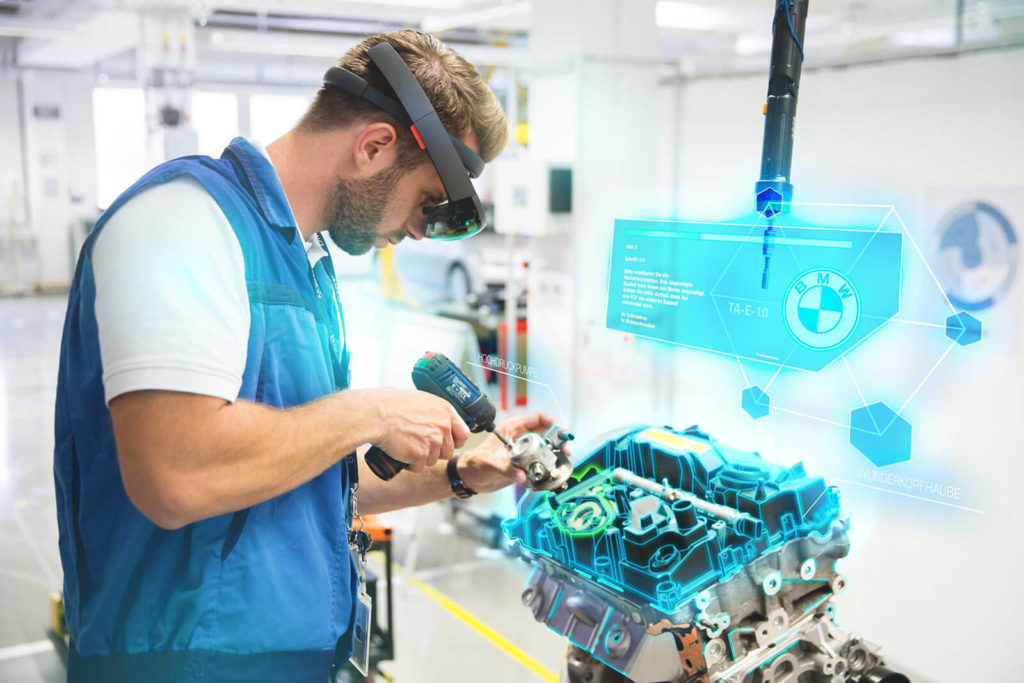Virtual reality in industry and production

Industry
Industry is an extensive industry and includes various types of activities with complex production processes.
Industrial enterprises solve many key tasks: establishing the working cycle and production; ensuring the serviceability of equipment; creating safe working conditions; training and advanced training of personnel; preventing accidents and emergencies. The introduction of virtual reality simulators helps enterprises to simplify the solution of these tasks.
Virtual reality allows you to create a digital copy of the enterprise, show workflows and «pain points» for working out and eliminating shortcomings. The user has the opportunity to influence the virtual environment and have feedback at the same time.
In what areas is virtual reality used?
Design and development of engineering applications for mechanical engineering, industrial and civil construction.
Visualization of the digital double of the enterprise.
Manual for the operation, repair, maintenance, assembly of equipment, devices and equipment.
Training of personnel in the rules of safe behavior at the workplace and in case of emergency situations.
Advantages of using VR simulators in industry and production:
Improving labor productivity
Virtual reality technology allows you to quickly, visually and informatively demonstrate the design features and components of any equipment or industrial product. Employees get access to setting up, repairing, assembling equipment, as well as checking practical and theoretical knowledge.
Cost reduction
The use of VR allows enterprises to reduce the cost of training personnel and the risks of damage to expensive equipment.
Ensuring the safety of the company’s work
VR makes it possible to carry out safety instructions and train personnel to work in standard and emergency situations.
High-quality personnel training
The absence of distractions and a realistic virtual environment ensure deep immersion and assimilation of the material at the level of visual memory and training of personnel to work in standard and emergency situations.
Scalability
VR is easily scaled, which helps to ensure the same high standards of training throughout the organization.
Flexibility
VR easily adapts to changing requirements and new equipment.
Virtual reality opens up great opportunities in such a multi-stage industry as mechanical engineering, which includes the creation of assembly layouts, individual parts and the entire product. The constant creation of life-size prototypes for their study and testing leads to a loss of time and money resources.
The use of virtual reality allows you to modernize the process of designing and manufacturing products. VR is used throughout the entire product life cycle: from the design stages to identify errors, conduct mock-up commissions and check ergonomics, and ending with the organization of the production process, working out maintenance, repair and modernization processes.
Advantages of using virtual reality simulators in mechanical engineering:
visualization of the project makes it possible to see errors at the early stages of design, check the operational characteristics of the product, compliance with safety and repair requirements, compliance with tactical and technical requirements;
allows you to demonstrate the product in virtual reality for conducting mock-up commissions, collective display to customers, investors on the spot and over the network;
recreates the assembly and disassembly process for visual training, preparation of technical documentation;
forms practical skills of performing production operations.

